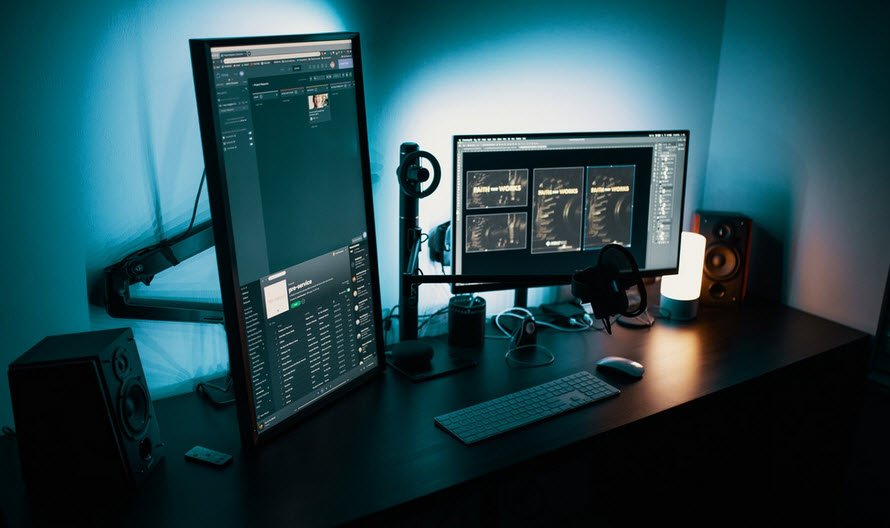
The term computer generation refers to the development of both the hardware and software technologies. Each step of development in computer is regarded as a new generation of computers. Each generation of computers results in smaller, cheaper and powerful machines. There are five computer generations that we usually consider:
- First Generation Computers
- Second Generation Computers
- Third Generation Computers
- Forth Generation Computers
- Fifth Generation Computers
Also Read:
- List of Computer Input Devices You Need To Know
- List of Computer Output Devices You Need To Know
- List of Secondary Storage Devices
1. First Generation Computers (1945-59)
The computers that used vacuum tube circuit technology were called as first generation computers. This vacuum tube was the only main electronic component of first generation computers. Machine language was used to provide instructions. These computers consumed lot of electricity and were quite large in size.

Examples:
- ENTAC – Electronic Numerical Integrator and Calculator
- EDVAC – Electronic Discrete Variable Automatic Computer
Features:
- Usage of vacuum tubes.
- Vacuum tube was a fragile glass device that was used to control and amplify the electronic signals.
- It laid a path to the advent of electronic digital computer.
- Processor speed was determined in milliseconds.
Limitations:
- Slow speed of input and output operations.
- Over-heating problems.
- Maintenance was required from time to time.
- Bulky in size, so required a lot of space.
- Limited programming capabilities.
2. Second Generation Computers (1959-65)
The computers that used transistors in place of vacuum tubes uses in first generation computers were called as second generation computers. The reason for using these transistors instead of vacuum tubes was their small size and consumption of less power. These transistors were made of semiconductors.

Examples:
- IBM 1400 series.
- UNIVAC 1108.
Features:
- Smaller in size as compared to first generation computers.
- Dissipate lesser heat than first generation computers.
- More reliable and less prone to errors.
- Magnetic core primary memory was used.
- High level programming – COBOL, FORTRAN was involved.
Limitations :
- Maintenance was required from time to time.
- Increase in the complexity of the system.
- High cooling systems were required.
- More human labor was required at assembly phase.
3. Third Generation Computers (1965-74)
The computers that used microelectronics or integrated circuit IC technology were called as third generation computers. During this period, the concept of chips that were made from silicon was involved and these chips helped to integrate large number of circuit elements.

Examples:
- IBM 360 series.
- Honeywell 6000 series.
Features:
- Each integrated circuit IC consisted of a large number of chips in small packages.
- Low power consumption.
- Easily portable.
- Commercial production was possible at cheaper rates.
- Computational time was reduced significantly and processor speed was measured in nano seconds.
Limitations:
- High technology required for the manufacturing of integrated circuits ICs.
- Increase in the complexity of the system.
- High cooling systems were required.
4. Fourth Generation Computers (1974-80)
The computers that used integrated circuits with very large scale integration VLSI were called as fourth generation computers.

Examples:
- IBM 370.
- Burroughs B7700.
Features:
- High processing power.
- Reduction in cost as well as in size.
- Magnetic core memories were replaced by semiconductor memories.
- Graphic terminal were involved.
- Emerged as totally general purpose.
Limitations:
- Increase in the complexity of the system.
- Sophisticated technology was used for processor design.
5. Fifth Generation Computers
The computers that will be made to think and take decisions of their own through artificial intelligence are called as fifth generation computers. Today, a lot of research is being going on in this field. The aim is to incorporate the features of human beings into the computer system that can handle many tasks with great precision and at a rapid speed.

Examples:
- Expert systems.
- Knowledge Information Processing System KIPS.
- Robotics.
- Natural language processing
- Neural networks
Features:
- Usage of very sophisticated human-machine interface.
- Artificial intelligence is being used.
- Involving the programming language like PROLOG.
- How To Fix the Crowdstrike/BSOD Issue in Microsoft Windows
- MICROSOFT is Down Worldwide – Read Full Story
- Windows Showing Blue Screen Of Death Error? Here’s How You Can Fix It
- A Guide to SQL Operations: Selecting, Inserting, Updating, Deleting, Grouping, Ordering, Joining, and Using UNION
- Top 10 Most Common Software Vulnerabilities
- Essential Log Types for Effective SIEM Deployment
- How to Fix the VMware Workstation Error: “Unable to open kernel device ‘.\VMCIDev\VMX'”
- Top 3 Process Monitoring Tools for Malware Analysis
- CVE-2024-6387 – Critical OpenSSH Unauthenticated RCE Flaw ‘regreSSHion’ Exposes Millions of Linux Systems
- 22 Most Widely Used Testing Tools








